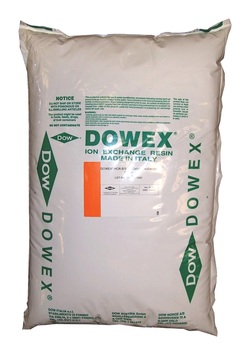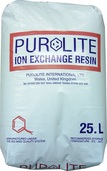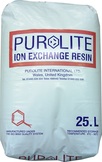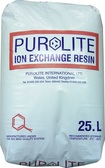Ion Exchange Medias
Ion-exchange resin is in the form of small (1–2 mm diameter) beads, usually white or yellowish, fabricated from an organic polymer. The material has a highly developed structure of pores on the surface of which are active sites. Ions (such as calcium) are held while other ions (sodium) are released; thus the process is called ion-exchange. There are many different types of ion-exchange resins which are fabricated to selectively prefer one or several different types of ions.
Softening Resins
|
Water softening ion-exchange resins are used to replace the magnesium and calcium ions found in hard water . The resin can be regenerated by washing it with salt (NaCl). The calcium and magnesium ions migrate off the resin, being replaced by sodium ions from the solution until a new equilibrium is reached.
0804014146 Dowex softening resin 0802012899 Purolite C100E softening resin 0802013376 Purolite PFC100E softening resin
|
| |||||||
Mixed Bed Deionisation Resins
|
Mixed bed resins contain both cation and anion resins so most minerals are held within the resin and pure water is produced. Typically mixed bed resins can produce water of 1 to 5 uS/Cm while the purer versions can get to 0.5uS/cm.
0801040002 Lewatit NM60 mixed bed 0802041485 Purolite MB400 mixed bed resin 0802048842 Purolite NRW3240 purer mixed bed |
| |||||||
Nirate Reduction Resin
|
Nitrate levels in many waters are often high. Over 60% of nitrate enters water from agricultural land. High concentrations of nitrate in water can cause methaemoglobinaemia in very young children).. The current regulatory standard is 50 mg/l nitrate is derived from the standard in the European Union's Drinking Water Directive.
0802021119 A520E Purolite nitrate resin
|
| |||||
Anion & Cation Resins
|
0803012168 C100H cation resin
0802078856 C107 de alk resin 0900016960 A100 anion resin 0803012167 A200 anion resin 0802053379 A400 anion resin 0802058845 A500P anion resin 0802051144 A850 anion resin 0802058843 A860S anion resin |
| |||||





